SC-300 Exam Question 1
You have an Azure AD tenant that contains a user named User1. User1 is assigned the User Administrator role.
You need to configure External collaboration settings for the tenant to meet the following requirements: |
*Guest users must be prevented from querying staff email addresses.
*Guest users must be able to access the tenant only if they are invited by User1.
Which three settings should you configure? To answer, select the appropriate settings in the answer area.
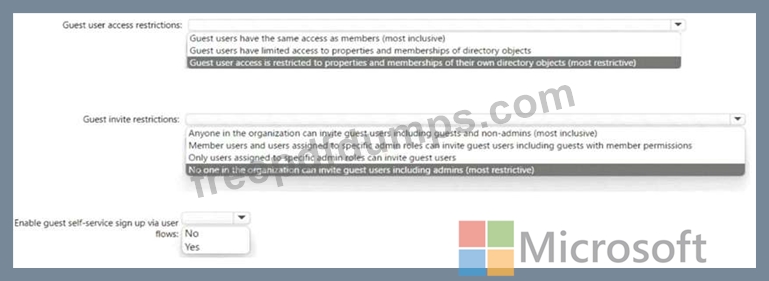
You need to configure External collaboration settings for the tenant to meet the following requirements: |
*Guest users must be prevented from querying staff email addresses.
*Guest users must be able to access the tenant only if they are invited by User1.
Which three settings should you configure? To answer, select the appropriate settings in the answer area.

SC-300 Exam Question 2
You have an Azure subscription.
You need to create two custom roles named Role1 and Role2. The solution must meet the following requirements:
* Users that are assigned Role1 can create or delete instances of Azure Container Apps.
* Users that are assigned Role2 can enforce adaptive network hardening rules.
Which resource provider permissions are required for each role? To answer, select the appropriate options in the answer area.
NOTE: Each correct selection is worth one point.
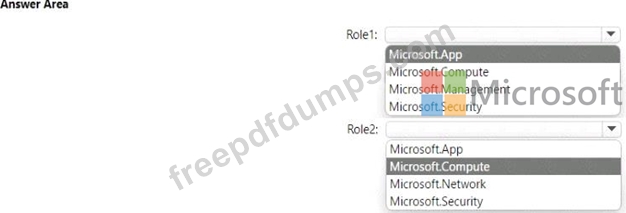
You need to create two custom roles named Role1 and Role2. The solution must meet the following requirements:
* Users that are assigned Role1 can create or delete instances of Azure Container Apps.
* Users that are assigned Role2 can enforce adaptive network hardening rules.
Which resource provider permissions are required for each role? To answer, select the appropriate options in the answer area.
NOTE: Each correct selection is worth one point.

SC-300 Exam Question 3
You have an Azure Active Directory (Azure AD) tenant that contains an administrative unit named Department1.
Department1 has the users shown in the Users exhibit. (Click the Users tab.)
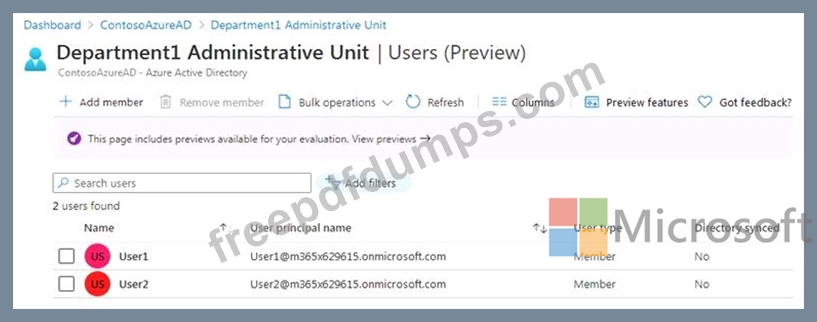
Department1 has the groups shown in the Groups exhibit. (Click the Groups tab.)
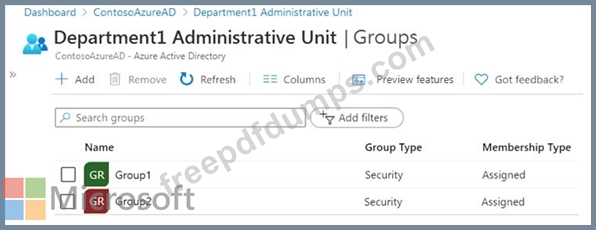
Department1 has the user administrator assignments shown in the Assignments exhibit. (Click the Assignments tab.)
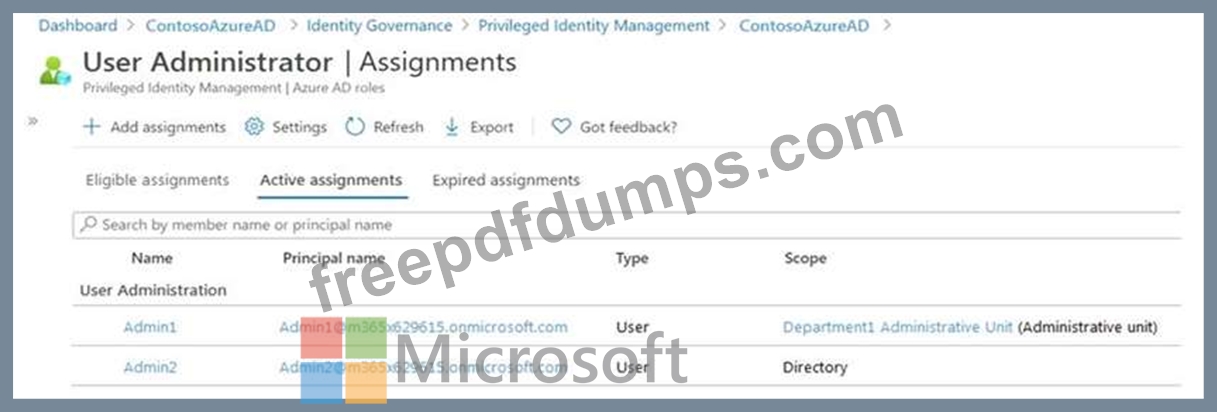
The members of Group2 are shown in the Group2 exhibit. (Click the Group2 tab.)
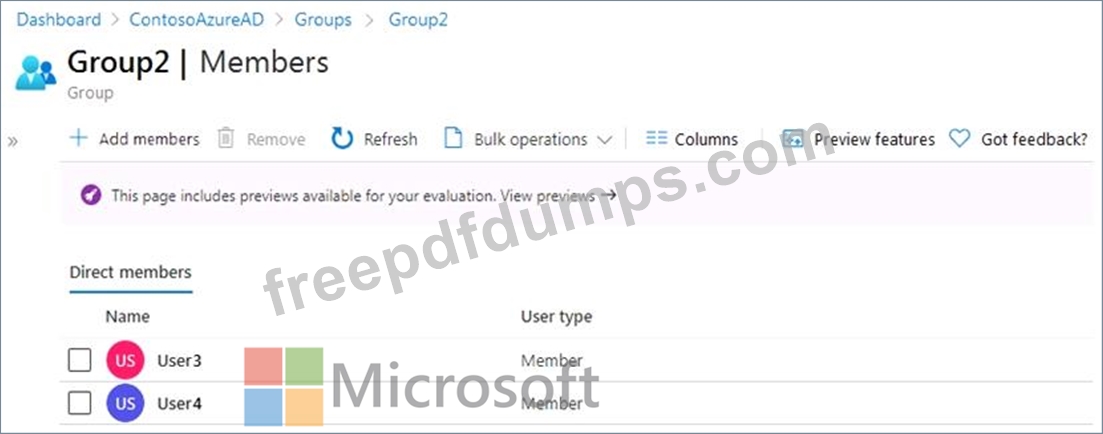
For each of the following statements, select Yes if the statement is true. Otherwise, select No.
NOTE: Each correct selection is worth one point.
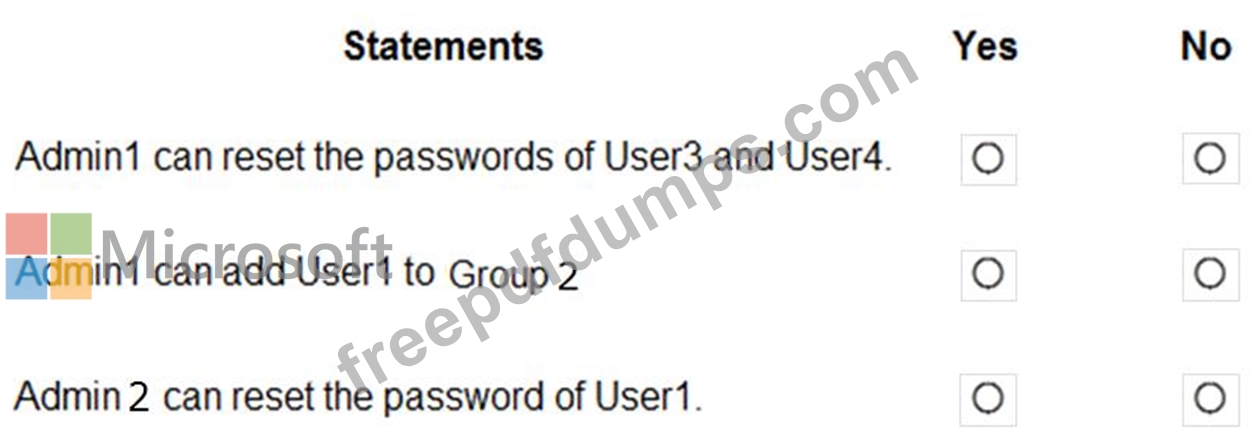
Department1 has the users shown in the Users exhibit. (Click the Users tab.)

Department1 has the groups shown in the Groups exhibit. (Click the Groups tab.)

Department1 has the user administrator assignments shown in the Assignments exhibit. (Click the Assignments tab.)

The members of Group2 are shown in the Group2 exhibit. (Click the Group2 tab.)

For each of the following statements, select Yes if the statement is true. Otherwise, select No.
NOTE: Each correct selection is worth one point.

SC-300 Exam Question 4
You have an Azure Active Directory (Azure AD) tenant named contoso.com that has Azure AD Identity Protection policies enforced.
You create an Azure Sentinel instance and configure the Azure Active Directory connector.
You need to ensure that Azure Sentinel can generate incidents based on the risk alerts raised by Azure AD Identity Protection.
What should you do first?
You create an Azure Sentinel instance and configure the Azure Active Directory connector.
You need to ensure that Azure Sentinel can generate incidents based on the risk alerts raised by Azure AD Identity Protection.
What should you do first?
SC-300 Exam Question 5
Note: This question is part of a series of questions that present the same scenario. Each question in the series contains a unique solution that might meet the stated goals. Some question sets might have more than one correct solution, while others might not have a correct solution.
After you answer a question in this section, you will NOT be able to return to it. As a result, these questions will not appear in the review screen.
You have a Microsoft 365 tenant.
All users must use the Microsoft Authenticator app for multi-factor authentication (MFA) when accessing Microsoft 365 services.
Some users report that they received an MFA prompt on their Microsoft Authenticator app without initiating a sign-in request.
You need to block the users automatically when they report an MFA request that they did not initiate.
Solution: From the Azure portal, you configure the Notifications settings for multi-factor authentication (MFA).
Does this meet the goal?
After you answer a question in this section, you will NOT be able to return to it. As a result, these questions will not appear in the review screen.
You have a Microsoft 365 tenant.
All users must use the Microsoft Authenticator app for multi-factor authentication (MFA) when accessing Microsoft 365 services.
Some users report that they received an MFA prompt on their Microsoft Authenticator app without initiating a sign-in request.
You need to block the users automatically when they report an MFA request that they did not initiate.
Solution: From the Azure portal, you configure the Notifications settings for multi-factor authentication (MFA).
Does this meet the goal?





